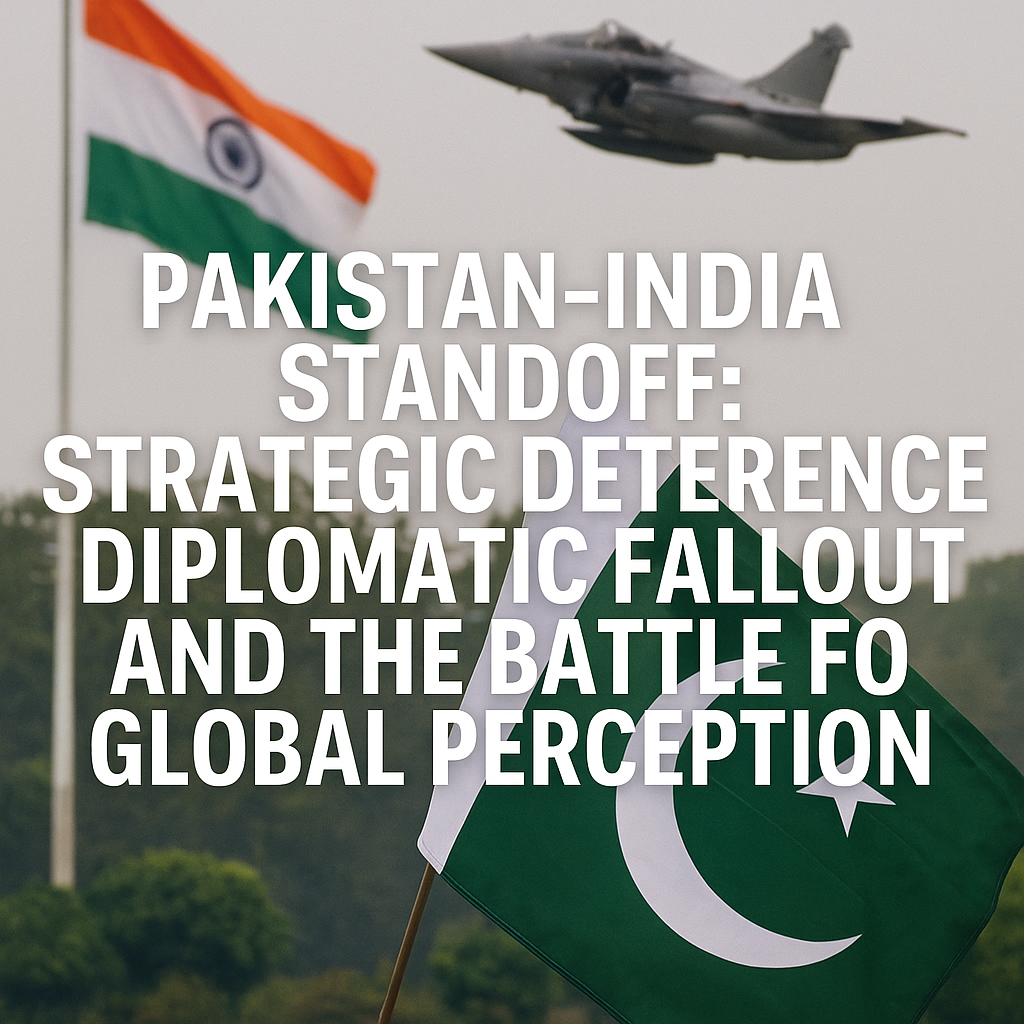Pakistan-India Standoff: Strategic Deterrence, Diplomatic Fallout, and the Battle for Global Perception
In the recent military standoff between India and Pakistan, the region was once again on the brink of a full-blown war. While New Delhi sought to reshape the strategic landscape in its favor, Islamabad’s measured yet forceful kinetic response not only thwarted India’s escalation plans but also re-established Pakistan’s conventional deterrence as a credible force under the nuclear overhang. The standoff sent a clear message: Pakistan will respond decisively if provoked, and the costs for India could outweigh the gains in any future conflict.
Conventional Deterrence vs. Escalation: A Strategic Reset
Pakistan’s military response is seen by many defense analysts as a successful check on India’s attempt to broaden the spectrum of conventional war under the assumption of nuclear deterrence. According to reports, the loss of multiple Rafale aircraft by India and Pakistan’s demonstrated ability to target strategic sites across the Indian mainland forced a recalibration of India’s aggressive posture. Islamabad’s show of force effectively neutralized India’s bid for a “limited war” doctrine, a concept that has increasingly dominated Indian military thinking in recent years.
New Delhi’s assumption that it could carry out precision strikes under the umbrella of nuclear deterrence without triggering broader consequences backfired. In reality, India’s military objectives were left unachieved, its strategic calculations misfired, and its international credibility suffered.
Modi’s “New Normal” Falls Apart
Indian Prime Minister Narendra Modi’s rhetoric about having destroyed “terrorist infrastructure” in Pakistan proved hollow when contrasted with ground realities. Despite bold claims, India failed to create any tangible shift in its favor. In fact, the assertion of setting a new military norm was met with harsh realities that India could not ignore. Rather than establishing a precedent for future military responses to cross-border terror attacks, New Delhi found itself boxed in, wary of an even more punishing reprisal from Pakistan if it attempted a similar strategy again.
Pakistan, by reaffirming its conventional strength and political will, has effectively reshaped the regional security equation, turning India’s so-called “new normal” into a strategic liability.
A Fragile Ceasefire and the Risk of Miscalculation
Today, the situation remains precarious. A tenuous ceasefire agreement is in place, but the broader diplomatic framework between the two nuclear neighbors remains broken. The Directors General of Military Operations (DGMOs) continue to engage at a technical level, but meaningful political dialogue remains absent.
This lack of sustained communication increases the risk of future miscalculations, especially in a crisis-prone environment where even a minor incident could spiral into another major military confrontation. Modi’s declaration that India had “only suspended” military operations adds to the uncertainty, suggesting that the door to renewed escalation remains open.
Diplomatic Damage: India’s Global Standing Takes a Hit
Perhaps the most significant fallout of this crisis was diplomatic. India’s militaristic approach alienated several key global players and shifted international attention away from terrorism to the risks of nuclear war in South Asia. What was intended to be a show of strength instead revealed strategic recklessness. The international community began to question the wisdom of New Delhi’s aggressive policies, and for the first time in years, Kashmir returned to the global agenda.
In a particularly stinging development for India, former U.S. President Donald Trump offered to mediate the Kashmir conflict, a move that India publicly rejected but one that effectively re-hyphenated India and Pakistan in the eyes of the global community—something Indian diplomacy had long tried to avoid. Read more on Trump’s Kashmir mediation
India’s decision to suspend the Indus Waters Treaty also backfired. Even U.S. officials, in private communications, reportedly urged India to maintain its obligations under the treaty. Learn more about the Indus Waters Treaty and its history
US Intervention and China’s Strategic Alignment with Pakistan
The Trump administration played a decisive role in diffusing tensions, with Secretary of State Marco Rubio and Vice President J.D. Vance engaging both sides to urge de-escalation. Multiple diplomatic calls and backchannel efforts culminated in Trump announcing the ceasefire—an announcement India conspicuously ignored, refusing to publicly acknowledge the American role in ending the standoff.
In stark contrast, Pakistan and China maintained robust coordination throughout the crisis. Intelligence sharing, strategic alignment, and diplomatic synergy between the two countries strengthened their position while exposing the strategic isolation of India on the global stage.
Domestic Reactions: A Tale of Two Nations
Domestically, the political consequences of the conflict were equally revealing. In India, Modi’s Operation Sindoor drew criticism from opposition parties and even from within his traditional base. The right-wing was disillusioned by the decision to agree to a ceasefire, while the opposition painted the operation as a strategic failure.
In Pakistan, however, the narrative was starkly different. There was a surge of national unity, a renewal of confidence in the military, and widespread public approval of the government’s handling of the crisis. The military’s image soared, and the political leadership benefited from the perception of strength and success in repelling Indian aggression.
The Road Ahead: Uncertainty and Unfinished Business
While some confidence-building measures are underway, and the ceasefire is holding, long-term peace between India and Pakistan remains elusive. Both countries have emerged from the crisis with diametrically opposed interpretations. India believes it set a precedent, while Pakistan is convinced it neutralized that precedent entirely.
Without a meaningful diplomatic roadmap, these conflicting narratives only heighten the risk of future escalations. Any new incident—be it cross-border firing, a terrorist attack, or misinformation—could ignite another confrontation. With nuclear weapons in play, the margin for error is razor-thin.
Final Thoughts
The recent Pakistan-India military crisis underscores the fragility of peace in South Asia. It has shattered the illusion that conventional strikes can occur under a nuclear umbrella without grave consequences. The geopolitical fallout, domestic repercussions, and diplomatic aftershocks show that military adventurism comes with heavy costs.
For long-term stability, sustained dialogue, mutual recognition of red lines, and international engagement are essential. Otherwise, the region will remain one misstep away from disaster.
